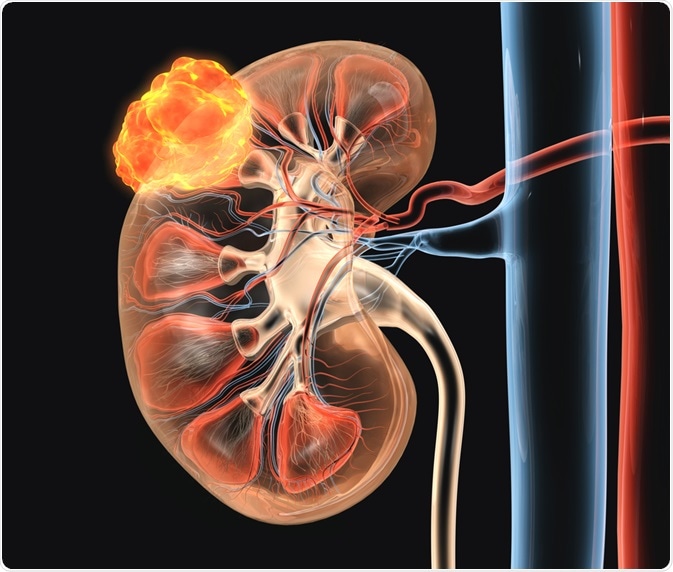Wilms tumor, which is also known as nephroblastoma, is a type of cancer that initially appears in the kidneys. Wilms tumor is the most common type of kidney cancer in children, accounting for approximately 90% of cases.

Image Credit: Axel_Kock / Shutterstock.com
Wilms tumor may also present in adults, although this is much less common. With the typical Wilms tumor patient being approximately 3 years old, it is rare for a patient older than 8 years old to be newly diagnosed with this type of cancer.
Most cases of Wilms tumor are unilateral and affect just one of the two kidneys, usually with a single localized tumor. Occasionally, around 1 in 15 children with this type of cancer will have multiple tumors in a single kidney. Additionally, about 5% of cases have bilateral disease, in which both kidneys are affected by the tumors.
Symptoms
In the early stages of the disease, symptoms are not usually problematic and, as a result, Wilms tumors often grow to be quite large before they are detected. However, in most cases, the diagnosis of Wilms tumor is made before the tumor metastasizes.
Symptoms that may be indicative of Wilms Tumor include:
- Abdominal pain and swelling
- Constipation
- Fever
- Hypertension
- Loss of appetite
- Malaise
- Nausea
- Urine discoloration
- Vomiting
There may also be a growth localized to one side of the body in the abdominal region due to the tumor growth. This may be detectable upon physical examination.
Diagnosis
Initially, Wilms tumor may be suspected when a child presents with symptoms characteristic of the disease. The physician will then ask about medical history and whether there is any family history of cancer. Additionally, a physical exam will need to be conducted in order to find the indicative presence of an abdominal mass or hypertension.
Several scans and imaging tests may be requested to determine the cause of the symptoms and if Wilms tumor is to blame. These tests may include:
- Blood test for signs of anemia, as well as measuring the levels of urea and nitrogen
- Computer tomography (CT) scan of the abdominal region
- Creatinine clearance
- Ultrasound of the abdominal region
- Urinalysis
- X-ray of the abdominal region and chest
The diagnosis of Wilms tumor can only be confirmed with a biopsy of tumor cells, which are examined microscopically in a laboratory environment. If evidence of Wilms tumor is discovered, further tests may be required to confirm if the disease has metastasized to other areas of the body.
Types
There are two main types of Wilms tumor, according to their microscopic appearance:
- Favorable histology refers to cells that do not display normal qualities but show no evidence of anaplasia. This type accounts for the majority of children with Wilms tumor and has a good prognosis.
- Unfavorable histology refers to cells with wide variability and are characterized by large and distorted DNA in the cell nucleus, known as anaplasia. This is a less common type and is associated with a poorer prognosis.

Image Credit: Kateryna Kon / Shutterstock.com
Prognosis
The prognosis of Wilms tumor is usually quite positive, particularly when the disease is discovered early and before it has metastasized to other areas of the body. Localized tumors are associated with a 90% cure rate with 8 out of 10 patients surviving long term.
The primary tumor is usually removed as early as possible to prevent the spread of the cancer to other organs such as the lungs, liver, bones, and brain. Tumor removal may affect the renal function of the kidneys; however, the benefits are generally considered to greatly outweigh the risks.
Survivors of Wilms tumor are also at an increased risk of second tumors. This may include bone and soft-tissue sarcomas, lymphoma, melanoma, leukemia, as well as cancers of the breast and gastrointestinal tract.
References
Further Reading
Last Updated: May 21, 2021